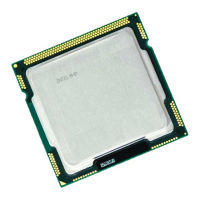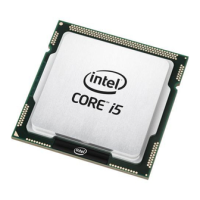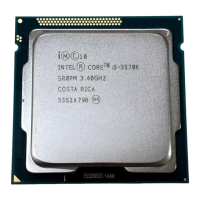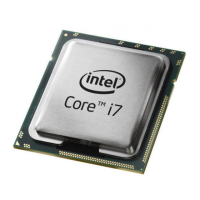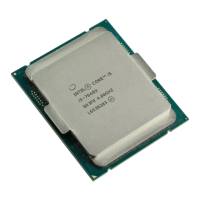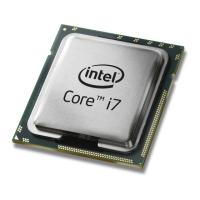HARDWARE REFERENCE A
3-6
3.4.2 Upgrading SIMM DRAM
On-board DRAM is located in two SIMM sockets as shown in Figure 3-1 (pg. 3-1). The standard
configuration is 2 Mbytes of memory and may be upgraded to 8 or 32 Mbytes. Table 3-5 shows the
modules which you may use. The memory modules should use 60 or 70 ns Fast Page Mode DRAM
(60 ns memory results in better performance at 25 and 40 MHz operation). Use fast page mode, x32 or
x36, 72 pin SIMMs.
The SIMM block consists of two standard 72-pin SIMM sockets, arranged as two banks. Both SIMM
sockets must contain SIMMs; these cannot be left empty. The sockets accept the following SIMM types.
The x36 SIMM parity bits are not used in this design. However, the x36 SIMMs are standard for PCs
and workstations, which makes them more readily available. The only penalty is more loading on the
address and control lines due to the extra DRAM devices on the x36 SIMM.
All address and control lines to the SIMMs are terminated with 22 ohm resistors.
1. Bandwidths stated are sustained bandwidths, not peak.
2. The extra cycle is the overhead of DRAM precharge. DRAM precharge time only impacts back-to-back cycles.
Table 3-4. DRAM Access Times
Frequency Operation DRAM Speed Clock Cycles Wait States
Sustained
Bandwidth
1
16 MHz Read 60, 70ns 3,1,1,1 1,0,0,0 36 Mbytes/sec
20 MHz Read 60, 70ns 3,1,1,1 1,0,0,0 45 Mbytes/sec
25 MHz Read 60ns 3,1,1,1 1,0,0,0 66 Mbytes/sec
25 MHz Read 70ns 4,1,1,1,1
2
2,0,0,0 50 Mbytes/sec
33 MHz Read 60, 70ns 4,1,1,1,1
2
2,0,0,0 66 Mbytes/sec
40 MHz Read 60ns 4,1,1,1,1
2
2,0,0,0 80 Mbytes/sec
40 MHz Read 70ns 5,2,2,2,1
2
3,1,1,1 53 Mbytes/sec
16 MHz Write 60, 70ns 3,2,2,2 1,1,1,1 25.6 Mbytes/sec
20 MHz Write 60, 70ns 3,2,2,2 1,1,1,1 32 Mbytes/sec
25 MHz Write 60ns 3,2,2,2 1,1,1,1 44.5 Mbytes/sec
25 MHz Write 70ns 4,2,2,2,1
2
2,1,1,1 36 Mbytes/sec
33 MHz Write 60, 70ns 4,2,2,2,1
2
2,1,1,1 48 Mbytes/sec
40 MHz Write 60ns 4,2,2,2,1
2
2,1,1,1 58 Mbytes/sec
40 MHz Write 70ns 4,2,2,2,1
2
2,1,1,1 58 Mbytes/sec
NOTES:
• 256 Kbyte x 32 = 1 Mbyte • 1 Mbyte x 32 = 4 Mbyte • 4 Mbyte x 32 = 16 Mbyte
• 256 Kbyte x 36 = 1 Mbyte • 1 Mbyte x 36 = 4 Mbyte • 4 Mbyte x 36 = 16 Mbyte

